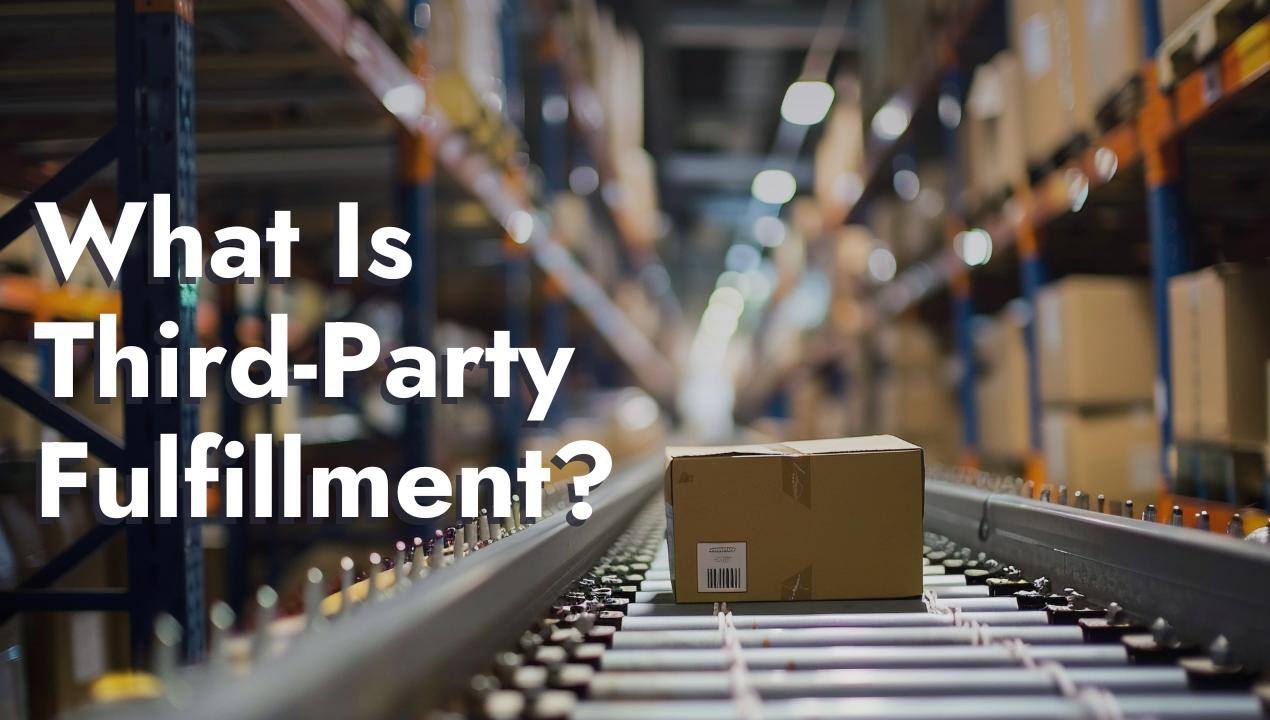Share this
Fulfillment Cost-Savings: How to Optimize Your Spending
by Shipfusion Team on Nov. 13, 2024

From warehousing and packing fees to shipping costs, money goes to lots of places to keep your ecommerce business’ fulfillment operations running. Understanding how they balance out your fulfillment cost is essential to maintaining a profitable bottom line.
But knowing the average cost is just the beginning – the real advantage comes from knowing how to optimize your fulfillment strategy without sacrificing service quality. In this article, we break down the key components behind fulfillment costs and offer actionable insights for keeping expenses in check while maximizing efficiency.
The Main Factors Influencing Fulfillment Cost
Several key components contribute to the overall cost of fulfillment services. These factors can vary significantly based on the nature of the business and the specific services required.
Warehousing, Pick and Pack, and Shipping Fees
Warehousing fulfillment costs generally account for a large portion of fulfillment expenses. This includes rent for storage facilities, utilities, and labor. Businesses may pay based on the amount of space used, or the total volume of goods stored. For instance, a company storing 1,000 square feet of product will incur different costs than another with 10,000 square feet.
The location of the warehouse is relevant as well; facilities in urban areas often come with higher rental prices compared to those in rural settings. Companies must weigh the benefits of proximity to their customer base against these costs to find the most strategic location for their operations.
Next, the pick and pack process involves retrieving the specific items ordered by customers and packaging them for shipment. This service typically incurs labor costs derived from the time staff spend picking, packing, and labeling products. The more orders processed, the higher the cumulative labor costs can be. Efficient systems tend to minimize these expenses.
Automation technologies, such as conveyor belts and robotic pickers, are increasingly being adopted to streamline this process, reduce human error, and ultimately lower labor costs. Furthermore, the layout of the warehouse can significantly impact efficiency; a well-organized space can lead to quicker retrieval times and improved order accuracy.
Shipping fees are another variable component of fulfillment costs. Providers often have contracts with carriers and may base pricing on weight and destination. For instance, shipping within the same state could be cheaper than cross-country delivery. Understanding shipping zones is essential for budgeting appropriately.
Furthermore, businesses must consider the impact of shipping speed on costs; expedited shipping options can significantly increase expenses but may also enhance customer satisfaction and retention. Offering a range of shipping options can help balance cost and service quality, allowing customers to choose what best fits their needs.
Additional Fulfillment Cost Considerations
Returns management is an often-overlooked cost that can significantly impact profitability. Many customers expect free returns, which can be costly for businesses if they are not factored into pricing strategies. Each return requires processing, inspection, and sometimes repackaging, adding both labor and logistics expenses.
Moreover, a high return rate can indicate issues with product quality or customer satisfaction, prompting businesses to reassess their offerings. Implementing a robust returns management system can help streamline the process, reduce costs, and even provide valuable insights into customer behavior and preferences.
Customization services, such as personalized packaging or product modifications, can also increase fulfillment costs. These services may cater to specific customer requests and can range from simple custom labels to more elaborate requirements. Offering these options can differentiate a brand in a competitive market, but businesses must carefully analyze the cost implications and potential return on investment. Additionally, as consumer expectations evolve, the demand for unique and tailored experiences is likely to grow, making it essential for companies to stay ahead of the curve in their fulfillment strategies.
Lastly, special handling fees may be applied to items that require unique conditions, like temperature control or fragile treatment. Companies must assess their product line to determine the necessity and cost implications of these special measures.
For example, perishable goods may require refrigerated storage and expedited shipping, while delicate items may need extra cushioning and care during handling. Understanding these requirements not only helps in budgeting but also ensures that products reach customers in optimal condition, thereby enhancing brand reputation and customer loyalty.
How Can Ecommerce Businesses Calculate Their Outsourced Fulfillment Cost?
Calculating fulfillment costs is essential for ecommerce businesses aiming to streamline operations and increase profitability. A clear understanding of expenditure allows for more informed decision-making.
Using Data to Break Down Your Fulfillment Spend
Utilizing data analytics is key in breaking down fulfillment expenses. Businesses can analyze past orders to identify patterns in shipping costs, labor time, and warehousing expenses. For example, if data shows consistent issues with high return rates, companies can adjust their approach to quality control or product matching.
Furthermore, tools such as accounting software can help track spending in real time. By compiling all data, businesses can create a comprehensive overview of costs that provides insight into where savings can be achieved.
Supply chain KPIs can also shed light on inefficiencies that need addressing. Additionally, integrating customer feedback into the data analysis can reveal insights about shipping preferences and delivery expectations, allowing businesses to tailor their fulfillment strategies to better meet customer needs.
Comparing Outsourced Fulfillment Cost vs. In-House Options
Many businesses face the choice between in-house and outsourced fulfillment. Each option encompasses various cost factors. When assessing in-house fulfillment, companies must consider overhead costs, employee salaries, and the price of warehouse space.
Conversely, third-party logistics (3PL) providers often have established networks and technology that can streamline the fulfillment process. However, businesses need to weigh these measured advantages against potential variable costs incurred through outsourcing. Factors such as shipping volume fluctuations and seasonal demand spikes can significantly impact overall costs, making it crucial for businesses to conduct a thorough analysis of their projected needs. Moreover, businesses should also consider the potential for scalability that comes with outsourcing, as 3PLs can often adapt more quickly to changing market conditions than in-house operations.
A balanced approach may involve calculating both options to pinpoint which one offers a more sustainable financial outcome. Businesses may start with a hybrid solution, managing low-volume items in-house while outsourcing larger demand products. This strategy not only helps in maintaining control over critical inventory but also allows for flexibility in responding to market changes without incurring excessive costs.
How to Optimize Fulfillment Costs Without Sacrificing Service Quality
In today's competitive market, balancing cost optimization with high service quality is vital to customer retention. Businesses can employ several strategies to achieve this equilibrium.
Volume Discounts, Shipping Zones, and Smart Packaging Solutions
Taking advantage of volume discounts is an effective way to manage shipping expenses. Many carriers provide lower rates for high volume shipments. Businesses that anticipate higher sales for specific periods, like holidays, can negotiate better rates ahead of time or utilize flat-rate options if applicable.
Understanding shipping zones further enhances cost efficiency. By having a clear idea of shipping destinations, companies can optimize their logistics strategy to prioritize fulfillment centers closer to their most frequent customers. This not only reduces transit times but also minimizes the risk of delays, which can be detrimental to customer satisfaction.
Implementing smart packaging can also reduce costs. For instance, using lightweight materials or designing packaging that minimizes size will help lower shipping fees. Efficient packing not only reduces costs but often leads to improved customer experiences by ensuring products arrive undamaged and on time. Moreover, sustainable packaging solutions can appeal to environmentally conscious consumers, adding an extra layer of value to the business's offerings.
Consider Outsourcing to a 3PL
Outsourcing fulfillment to a third-party logistics provider can be a cost-effective strategy for many ecommerce businesses. 3PLs have established relationships with carriers, allowing for advantages in shipping that can transfer to savings for the business. These partnerships often lead to better rates and more flexible shipping options, which can be crucial during peak seasons.
Additionally, 3PLs often use advanced technology like inventory management systems that can optimize stock levels and order processing. A business without the resources to invest in such technology can benefit significantly from outsourcing. The scalability offered by 3PLs also means that businesses can adjust their fulfillment capabilities in response to fluctuating demand, ensuring they are never overextended or underprepared.
Companies should conduct a thorough cost-benefit analysis to determine if this route aligns with their growth strategy. For many, outsourcing provides a way to focus on core operations while improving order accuracy and delivery times. Furthermore, 3PLs can offer valuable insights into market trends and consumer behavior, helping businesses make informed decisions about their logistics strategies.
Account for Inflation and Supply Chain Disruptions
Currently, inflation and supply chain disruptions have posed challenges to maintaining cost-effective fulfillment services. Rising costs for materials, labor, and transport are creating pressure on pricing structures across various sectors. These economic factors can lead to increased prices for consumers, potentially affecting sales and customer loyalty.
To combat these influences, businesses may need to come up with adaptable strategies, such as reaching negotiations with suppliers or re-evaluating their fulfillment partners. For instance, companies may explore alternative shipping options or regional suppliers to mitigate costs. In addition, diversifying the supply chain can help reduce dependency on single sources, enhancing overall stability.
Maintaining agility in the face of CPI fluctuations and shortages can improve resilience against future disruptions, allowing businesses to remain competitive. Companies that invest in robust risk management strategies will be better equipped to navigate these challenges, ensuring they can continue to deliver quality service to their customers.
How Automation Can Drive Down Fulfillment Cost
Lastly, the implementation of automation within fulfillment processes is a powerful method for reducing costs. Technologies like robotic pickers and automated sorting systems help speed up operations while minimizing human error. These innovations not only enhance efficiency but also allow for greater accuracy in order fulfillment, which is critical in maintaining customer trust.
Automating routine tasks, such as inventory tracking or replenishment, allows businesses to free up valuable time for employees to focus on customer service and complex tasks requiring human intervention. Furthermore, as technology evolves, investment in automation may yield significant cost savings over the long term. The initial costs of implementing these systems can be offset by the reduction in labor costs and the increase in throughput.
Your Fulfillment Cost Is an Investment with Shipfusion
Whether it's leveraging volume discounts, optimizing shipping zones, or outsourcing to a trusted 3PL provider like Shipfusion, the right strategies can make all the difference. Our state-of-the-art fulfillment solutions provide a clear path to efficiency by integrating technology, transparency, and tailored services that align with your business’s growth. Get started by contacting us today.
Share this
You May Also Like
These Related Articles

Order Fulfillment and Customer Service: What’s the Connection?

What Is Third Party Fulfillment?

Common Order Fulfillment Issues and How to Solve Them
- December 2024 (24)
- November 2024 (25)
- October 2024 (23)
- September 2024 (27)
- August 2024 (9)
- July 2024 (8)
- June 2024 (5)
- May 2024 (8)
- April 2024 (8)
- March 2024 (6)
- February 2024 (6)
- January 2024 (5)
- December 2023 (3)
- November 2023 (3)
- October 2023 (5)
- September 2023 (4)
- August 2023 (2)
- July 2023 (1)
- June 2023 (4)
- March 2023 (2)
- October 2022 (1)
- September 2022 (5)
- August 2022 (4)
- July 2022 (7)
- June 2022 (4)
- May 2022 (4)
- April 2022 (6)
- March 2022 (2)
- February 2022 (1)
- January 2022 (3)
- December 2021 (2)
- November 2021 (4)
- October 2021 (2)
- September 2021 (5)
- August 2021 (4)
- July 2021 (5)
- June 2021 (3)
- May 2021 (2)
- April 2021 (3)
- March 2021 (3)
- February 2021 (3)
- January 2021 (2)
- December 2020 (4)
- November 2020 (2)
- October 2020 (4)
- September 2020 (2)
- July 2020 (6)
- June 2020 (4)
- May 2020 (2)
- April 2020 (2)
- March 2020 (4)
- February 2020 (1)
- December 2019 (1)
- May 2018 (1)
- March 2018 (2)
- February 2018 (3)
- January 2018 (3)
- November 2017 (3)
- July 2017 (4)
- March 2017 (3)
- February 2017 (5)
- January 2017 (3)
- December 2016 (4)
- November 2016 (6)
- October 2016 (6)
- October 2015 (1)
- September 2015 (1)
- June 2015 (3)
- May 2015 (3)
- August 2014 (1)
- July 2014 (1)
- March 2014 (1)
- February 2014 (1)